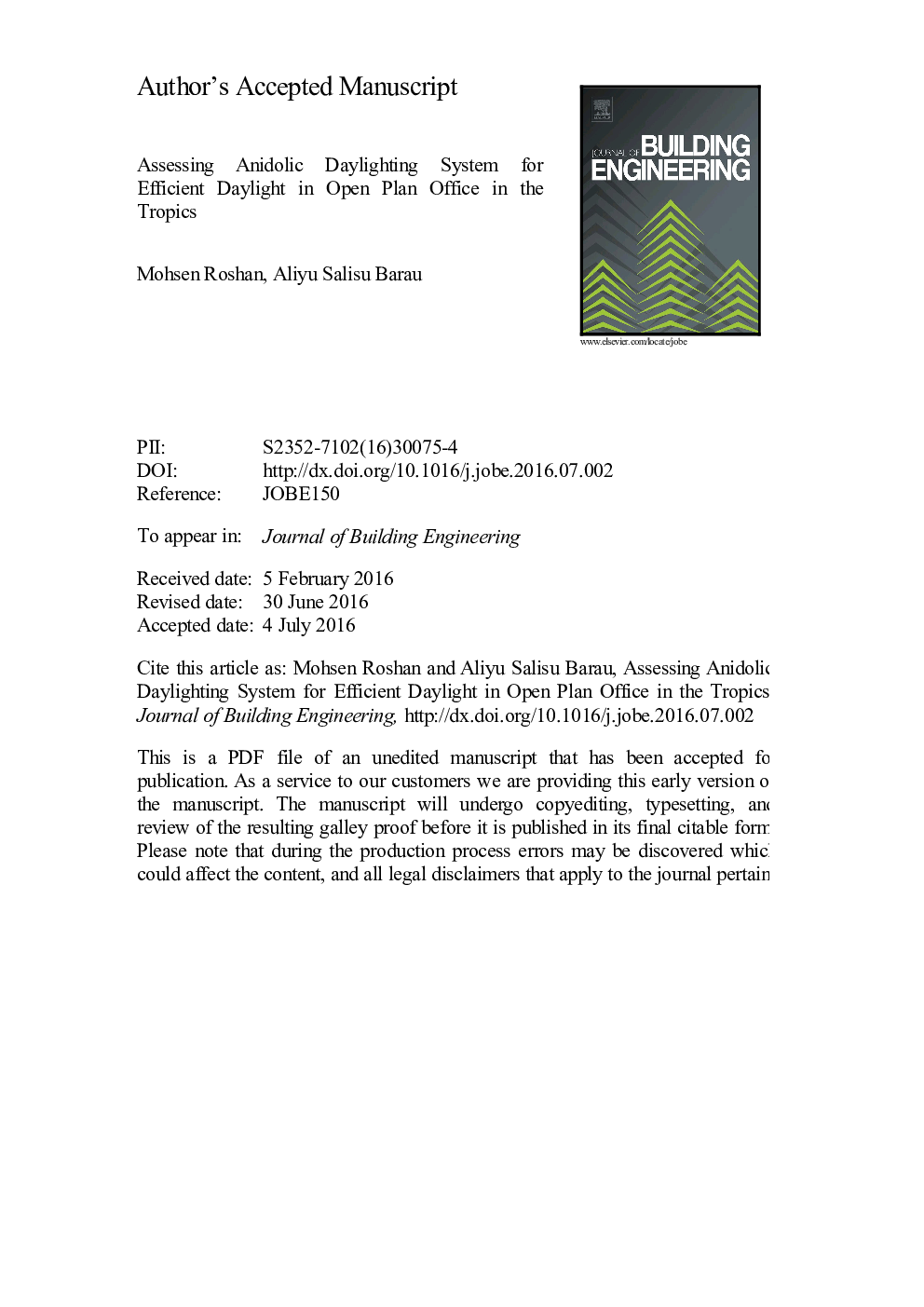| Article ID | Journal | Published Year | Pages | File Type |
|---|---|---|---|---|
| 4923207 | Journal of Building Engineering | 2016 | 26 Pages |
Abstract
The current study seeks to determine the Anidolic Daylighting System (ADS) variables that are applicable under tropical climate, according to modified duct shapes, duct width, duct length and distributor configuration. Our study involves experimental scale model and Integrated Environmental Solutions ãVirtual Environmentã (IESãVEã) computer simulation. We use physical scale model (1:10) to validate the simulation tool and to determine the appropriate orientation. Subsequently, the ADS simulation involves different variables of duct shapes, duct width, duct length and distributor configuration in an open plan office. The analysis of results for daylight quantity is based on absolute Work Plan Illuminance (WPI), daylight factor and daylight ratio. The results suggest that the ADS performed well for all orientations, but its performance in the South orientation is better than other orientations. This means that the developed ADS by rectangular duct shape and three meter duct width can transfer daylight as deep as 12.5Â m and 20Â m from window wall in overcast and intermediate sky conditions respectively. The study findings can give architects, engineers and built environment scientists some insights into exploring opportunities of using ADS to improve of occupants visual comfort as well as energy saving designs.
Related Topics
Physical Sciences and Engineering
Engineering
Civil and Structural Engineering
Authors
Mohsen Roshan, Aliyu Salisu Barau,
